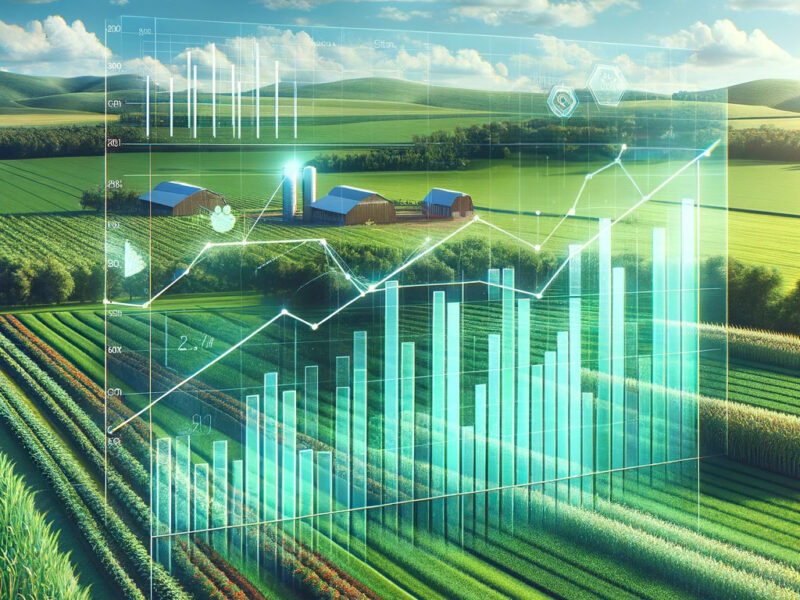
-
Phone:
+91 934 567 891 -
For Investments:
investment@farmmyland.in -
For Partnerships:
partnerships@farmmyland.in

For centuries, agriculture has been the backbone of India’s economy, providing employment to over 40% of the population. Yet, despite its importance, farmland remains one of the most undervalued assets in the country. Unlike urban real estate, which appreciates at a rapid pace, agricultural land struggles to generate returns, leaving many farmers financially strained. This article explores why farmland is undervalued, what challenges hinder its true potential, and how modern solutions like structured leasing, technological advancements, and sustainable practices can revitalize Indian agriculture.
Most Indian farmers do not have direct access to institutional credit, forcing them to depend on private money lenders who charge exorbitant interest rates. Even though they own large plots of land, they cannot leverage their property effectively to secure loans due to unclear land records, low formal income, and the seasonal nature of farming. This makes farmland an unproductive asset compared to urban real estate.
Over 85% of Indian farmers own less than 5 acres of land, making large-scale farming difficult. Additionally, most farmland leasing is informal, with landowners renting out their fields at extremely low rates (?7,000 to ?15,000 per acre per year). Since there is no structured mechanism to lease agricultural land at competitive rates, landowners fail to earn a sustainable income, discouraging long-term agricultural investments.
Unlike urban real estate, which appreciates in value over time, agricultural land is highly dependent on the success of crops. Market price fluctuations, erratic monsoons, and rising input costs make farmland a risky investment. Farmers hesitate to invest in large-scale cultivation because they fear potential losses.
Agricultural productivity in India remains low compared to global standards due to reliance on outdated farming techniques. Unlike developed nations where precision farming, hydroponics, and mechanization have increased yield per acre, Indian farmers struggle with low productivity. This inefficiency keeps farmland undervalued, as it does not generate optimal revenue.
Farm My Land is addressing the undervaluation problem by introducing structured farmland leasing. Instead of irregular and low annual rents, landowners receive fixed monthly income ranging from ?20,000 to ?2 lakh, based on the land’s location and potential. This structured leasing model allows farmers to have a steady cash flow, making farmland a stable and valuable asset.
By adopting polyfarming, aquafarming, and hydroponics, leased farmland can be transformed into high-yield agricultural zones. Advanced irrigation systems, greenhouse farming, and soil enrichment techniques can improve land productivity, increasing its market value and profitability.
A steady monthly income allows farmers to show proof of earnings, making it easier for them to secure bank loans for their other financial needs. This transition helps farmers escape informal lending traps and gain financial stability similar to salaried professionals.
Instead of fragmented individual farming, structured leasing allows for large-scale commercial cultivation. With the right supply chain and partnerships, high-value crops can be grown for direct consumer markets, exports, and industrial use. This structured approach increases land value over time, making agriculture a profitable investment.
One major reason for land depreciation is the depletion of soil health due to unsustainable farming practices. Farm My Land integrates climate-resilient farming techniques to ensure long-term productivity. By maintaining soil fertility, optimizing water use, and reducing chemical dependence, farmland can sustain high yields while increasing its overall valuation.
India’s growing population and increasing demand for high-quality food make agricultural land an extremely valuable yet underutilized resource. Through structured leasing, modern farming, financial inclusion, and sustainability-focused initiatives, farmland can be transformed into a high-yield investment that benefits both landowners and investors.
Farm My Land is leading this transformation by ensuring that farmers receive consistent income, agricultural land becomes highly productive, and India moves towards self-sufficiency in food production. By changing the way farmland is utilized, India can create a stronger, more resilient agricultural sector that benefits not just farmers, but the entire economy.